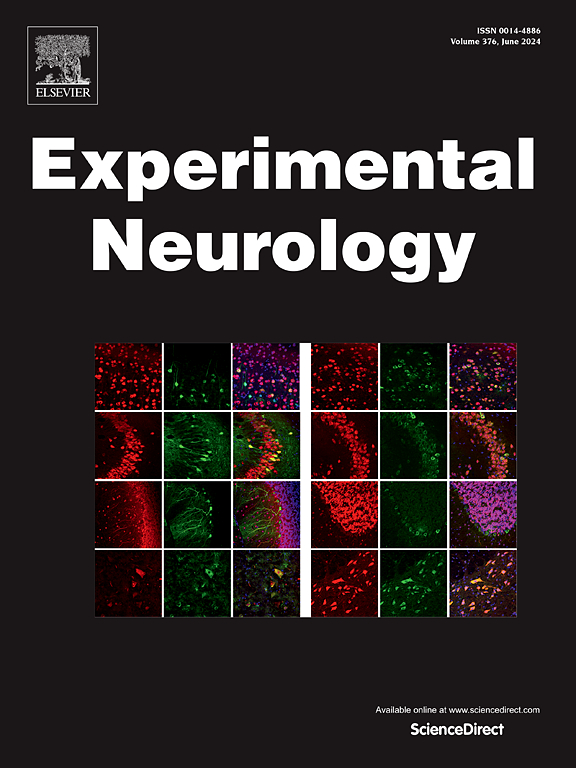Exercise your graft – An important lesson for cell replacement therapy for Parkinson's disease
IF 4.6
2区 医学
Q1 NEUROSCIENCES
引用次数: 0
Abstract
Parkinson's disease (PD) is a complex multisystem, chronic and so far, incurable disease affecting millions of people worldwide. With the continuing need for better therapeutic options for PD, there is a global renewed interest in cell replacement therapy due to progress in using pluripotent stem cells as an unlimited source of dopaminergic (DA) neurons for cell transplantation. Despite the significant progress made, obstacles remain that interfere with the restoration of functional circuits by DA grafts. The functional connectivity between DA grafts and host cells may be enhanced by adjunctive therapies, such as physical activity. Exercise modalities, such as use of treadmill, enhance neuroplasticity and improve motor and cognitive functions in PD patients. The patients are able to re-learn movement and adjust their posture, which, in turn, results in short term-reduced rigidity and improved stride length and cadence. By stabilizing selected active inputs and eliminating inactive ones, activity-dependent mechanisms fine-tune new neural circuits for optimal connection and physiological function. This communication will review the mechanisms and synergies between cell replacement therapy and physical and cognitive training to enhance induced pluripotent stem cell-mediated functional reinnervation of the striatum in PD.

锻炼你的移植物——帕金森病细胞替代疗法的重要经验。
帕金森病(PD)是一种复杂的多系统、慢性和迄今为止无法治愈的疾病,影响着全世界数百万人。随着对帕金森病更好的治疗选择的持续需求,由于多能干细胞作为细胞移植中多巴胺能(DA)神经元的无限来源的进展,全球对细胞替代疗法重新产生了兴趣。尽管取得了重大进展,但仍然存在干扰DA移植物恢复功能电路的障碍。DA移植物和宿主细胞之间的功能连通性可以通过辅助治疗增强,例如体育锻炼。运动方式,如使用跑步机,增强PD患者的神经可塑性,改善运动和认知功能。患者能够重新学习运动和调整姿势,从而在短期内减少僵硬,改善步幅和节奏。通过稳定选定的主动输入和消除不活跃的输入,活动依赖机制微调新的神经回路,使其达到最佳连接和生理功能。本文将回顾细胞替代疗法与物理和认知训练之间的机制和协同作用,以增强PD患者诱导多能干细胞介导的纹状体功能再神经支配。
本文章由计算机程序翻译,如有差异,请以英文原文为准。
求助全文
约1分钟内获得全文
求助全文
来源期刊

Experimental Neurology
医学-神经科学
CiteScore
10.10
自引率
3.80%
发文量
258
审稿时长
42 days
期刊介绍:
Experimental Neurology, a Journal of Neuroscience Research, publishes original research in neuroscience with a particular emphasis on novel findings in neural development, regeneration, plasticity and transplantation. The journal has focused on research concerning basic mechanisms underlying neurological disorders.
 求助内容:
求助内容: 应助结果提醒方式:
应助结果提醒方式:


